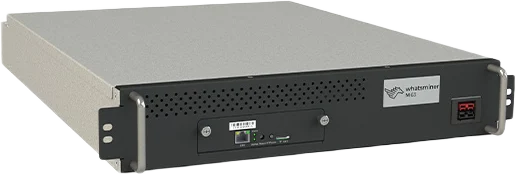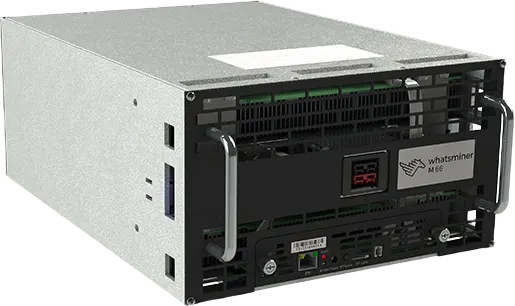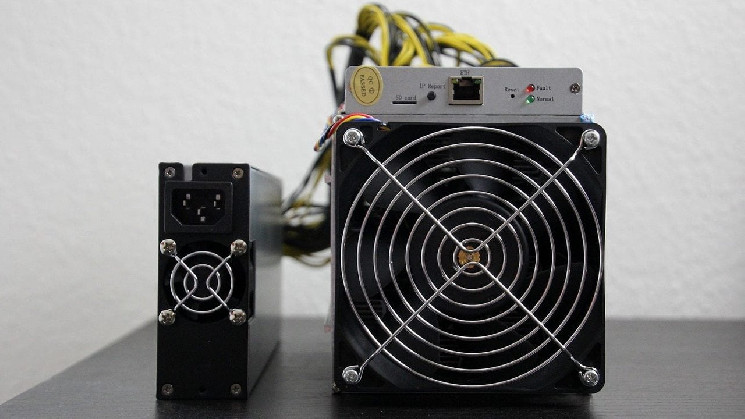During the first week of August 2024, Bitcoin’s hashprice—a key metric that gauges the daily value of one petahash per second (PH/s) of hashpower—dipped to its lowest point in history, sliding below $38 per PH/s. In this fiercely competitive bitcoin mining arena, only the most resilient operations can thrive, with the best-performing machines bringing in the highest returns for miners. Below, we take a closer look at the most powerful bitcoin application-specific integrated circuit (ASIC) mining rigs on the market, ranked by their terahash per second (TH/s) capabilities.
Air-Cooled, Hydro, and Immersion Bitcoin Mining
As hashprice hits rock bottom and mining difficulty peaks to record highs, BTC miners have encountered formidable challenges following the fourth Bitcoin halving event. Despite these obstacles, the speed of technological advancement in bitcoin mining has been noteworthy since the launch of the first ASIC mining rig.
For instance, the Avalon 1, introduced by Canaan Creative in 2013, boasted a hashrate of 60 GH/s, or 0.06 TH/s. Today, the top-tier mining rigs can reach up to 390 TH/s, not including the soon-to-be-released models from Bitmain and Microbt. The market now offers three types of ASICs—air-cooled, hydro-cooled, and immersion-cooled.
Air-cooled machines, the original and most widespread type, use fans to circulate air over the hardware, aiding in heat dissipation. While air-cooled miners are the most traditional and widely accessible option, they often struggle with efficiency and can be quite noisy. These machines may have trouble maintaining optimal temperatures, especially in larger mining setups.
Though they come with a lower initial cost, electricity bills can add up over time. Currently, leading ASIC manufacturers are also focusing on developing hydro-cooled and immersion-cooled machines, which are considered more efficient alternatives. Hydro bitcoin miners utilize a closed-loop system where deionized water flows through heat exchangers. While these systems can be pricey to purchase and set up, they offer the benefit of reduced operating expenses over time.
Similarly, immersion-cooled bitcoin miners also come with a hefty upfront cost but promise long-term savings on operational costs. In this setup, the entire mining hardware is submerged in a non-conductive dielectric fluid, which is said to outperform both hydro and air-cooled systems. While immersion cooling requires the highest initial investment, it excels in thermal management and heat dissipation, potentially extending the lifespan of the equipment.
Today’s Leading ASIC Bitcoin Mining Machines in Terms of Terahash per Second
With that out of the way, let’s dive into the machines crafted by Bitmain, Microbt and Auradine. First up is the Microbt Whatsminer M63S, a high-performance bitcoin mining machine equipped with hydro-cooling technology. The M63S delivers a maximum hashrate of 364 TH/s with a power consumption of 6,734 watts (W). The Whatsminer boasts an efficiency rating of 18.5 joules per terahash (J/T). At the time of writing, the Microbt Whatsminer M63S stands as the most profitable machine on the market.

Next on the list is the Auradine Teraflux AI3680, the second most profitable ASIC miner. This immersion-cooled single-phase device cranks out 375 TH/s. The U.S.-engineered AI3680 has an efficiency rating of around 15 J/T, slightly lower than the M63S. It also features a 4-nanometer (4nm) custom ASIC silicon chip and consumes 5,625 W. Auradine is a relatively new player in the ASIC race compared to veterans like Microbt, Bitmain, and Canaan.

Following the Teraflux AI3680 is Bitmain’s S21 Hydro Antminer, which offers a maximum hashrate of 335 TH/s. The S21 Hydro Antminer consumes 5,360 W of power, operates at a low noise level of around 50 decibels, and the hydro cycling feature ensures effective heat dissipation. The Antminer also leverages custom 7nm chips and has an energy efficiency rating of 16 J/T.

Then there’s Microbt’s Whatsminer M63, an hydro-cooled miner that delivers around 334 TH/s. The Whatsminer M63 has a power consumption of 6,885 W and an efficiency rating of 19.9 J/T. Like the S21 Hydro, it also operates at a noise level of 50 decibels. The M63 is an older machine, launched in October 2023, and the newer Whatsminers, which have yet to be released to the general public, promise better performance and efficiency.

The Whatsminer M66S+, an immersion-cooled miner, ranks fifth on the list with 294 TH/s. The machine’s power consumption is around 4,998 W, its noise level is about 45 decibels, and its efficiency rating is around 18.5 J/T. Similar to the M63, it’s a 2023 unit that has maintained longevity similar to Bitmain’s S19 units. The Whatsminer M63 uses 5nm chips, whereas the Whatsminer M66S+ employs 7nm chips.

In addition to those ASICs, other top machines in today’s market include Auradine’s AT2880 air-cooled device with 260 TH/s and Bitmain’s Antminer S19 XP Hydro with 255 TH/s. There’s also the Canaan Avalon A1566I immersion-cooled miner that delivers 250 TH/s. Miners also make use of the Bitmain Antminer S21 Pro, an air-cooled machine that offers 234 TH/s.
The miners mentioned above, though powerful, are already being outclassed by upcoming machines from Bitmain and Microbt that are set to make waves in the market. Bitmain, for example, has recently unveiled two new S21 Antminers: an air-cooled model that delivers 270 TH/s but comes with a less impressive efficiency rating of 13.5 J/T. Alongside this, Bitmain introduced the Antminer S21 XP Hydro, which is expected to reach a staggering 473 TH/s with an efficiency of 12.7 J/T.
Microbt isn’t far behind, having announced the release of three new Whatsminers, each boasting an efficiency of 17 J/T. Among these, the hydro-cooled M63S+ stands out, reportedly delivering 450 TH/s of hashpower. To put the power of the S21 XP Hydro and the hydro-cooled M63S+ into perspective, each comes close to packing half a petahash per second (PH/s) of hashpower.
 news.bitcoin.com
news.bitcoin.com
